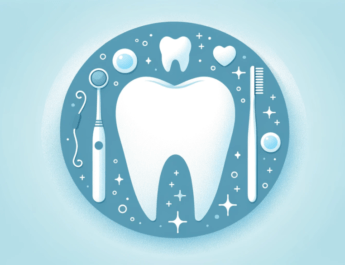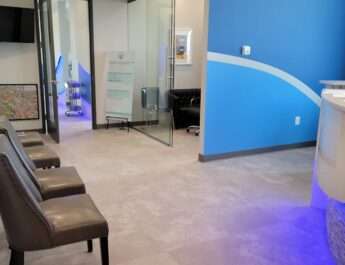As we advance into 2024, the dental industry witnesses a remarkable transformation, largely fueled by technological advancements. Among these, intraoral cameras emerge as pivotal tools, revolutionizing not only diagnostic procedures but also the entire patient experience. This deep dive into the latest technologies and innovations surrounding intraoral cameras will uncover how they are reshaping dental care, offering insights into the groundbreaking features that set the 2024 models apart.
Technological Renaissance in Dental Diagnostics
Intraoral cameras have long been an essential tool in dental diagnostics, but the leap in technological advancements in 2024 has elevated their utility to unprecedented levels. These devices now incorporate cutting-edge features that significantly enhance the precision and efficiency of dental care.
Ultra-High-Resolution Imaging and Advanced 3D Capabilities
The latest intraoral cameras have revolutionized dental imaging with ultra-high-resolution capabilities. These devices can capture images with exceptional clarity, allowing dentists to observe the minutiae of tooth enamel, tiny fractures, and early signs of decay that would be invisible to the naked eye. The advanced 3D capabilities further augment this by providing a comprehensive, multi-dimensional view of the oral cavity. This not only aids in accurate diagnostics but also assists in complex procedures such as dental implants or orthodontics, where understanding the spatial relationships within the mouth is crucial. Enhanced imaging leads to better-informed treatment decisions, personalized care plans, and potentially higher success rates in dental interventions.
Artificial Intelligence for Enhanced Diagnostics
Artificial intelligence (AI) integration marks a paradigm shift in how diagnostics are performed in dentistry. AI-powered intraoral cameras analyze dental images in real-time, identifying patterns and anomalies indicative of potential health issues. These smart algorithms can detect early signs of cavities, gum disease, and even oral cancer with a level of precision that rivals experienced dental professionals. Beyond diagnostics, AI also offers predictive analytics, estimating the progression of dental conditions, which is invaluable for preventive care strategies. By augmenting the dentist’s expertise with AI’s analytical capabilities, patients receive more accurate, timely, and personalized dental care.
Innovative Designs for Improved Patient Experience
The design evolution of intraoral cameras focuses on enhancing the patient experience through ergonomic improvements and reducing discomfort. The latest models are designed to be lightweight, easy to maneuver within the oral cavity, and cause minimal intrusion, making dental examinations more comfortable for patients. Special attention has also been paid to reducing the gag reflex and anxiety associated with dental visits. Innovations such as cameras with slimmer profiles or those that provide a more gentle interaction with the mouth’s soft tissues ensure that even patients with dental phobias can undergo examinations with ease. This human-centric design philosophy extends to the software interface as well, with intuitive controls and user-friendly features that enable dentists to conduct more efficient and less intrusive examinations.
Seamless Wireless Connectivity and Cloud-Based Solutions
Wireless intraoral cameras equipped with seamless connectivity redefine the management and sharing of dental records. Freed from the limitations of cables, these cameras offer unparalleled flexibility in capturing images from any angle, enhancing diagnostic accuracy. Cloud-based solutions facilitate the secure storage and instant sharing of these images, enabling real-time collaboration among dental professionals, irrespective of their physical location. This ecosystem not only streamlines the workflow within dental practices but also empowers patients by providing them access to their dental images. Such transparency fosters a deeper understanding of their oral health, encouraging more engaged and informed discussions about treatment options.
Eco-Friendly Manufacturing and Sustainability
The shift towards sustainability reflects a growing awareness of environmental issues within the dental industry. Intraoral cameras are now being produced with eco-friendly materials, such as biodegradable plastics or metals sourced from responsible mining practices. Manufacturers are also adopting green manufacturing processes that minimize waste and reduce carbon footprints. This commitment to sustainability resonates with environmentally conscious patients and practices, aligning with broader societal values. Moreover, the longevity and energy efficiency of these devices have been enhanced, reducing the overall environmental impact throughout their lifecycle.
Revolutionizing Dental Practices and Patient Care
The advancements in intraoral camera technology in 2024 are not just technical feats; they represent a fundamental shift in dental care practices. The precision and depth of diagnostic information available through these devices enable earlier detection of dental issues, significantly impacting treatment outcomes.
Moreover, the use of AI in intraoral cameras demystifies the diagnostic process for patients, fostering a deeper understanding and engagement in their treatment plans. The ability to visually share and discuss potential dental issues in real-time can lead to more informed decision-making and higher patient satisfaction.
The ergonomic and user-friendly design of the latest models also plays a crucial role in improving the patient experience. By minimizing discomfort and anxiety during examinations, these innovations encourage more frequent dental visits, contributing to better overall oral health.
The Future of Intraoral Cameras
As we look towards the future, the potential for further innovations in intraoral camera technology is boundless. Emerging trends hint at the integration of augmented reality (AR) for an even more enhanced visualization of dental conditions. Additionally, ongoing research focuses on embedding more comprehensive diagnostic functionalities directly into the devices, aiming to provide a more holistic view of oral health.
Conclusion
The landscape of intraoral cameras in 2024 is marked by rapid technological advancements and innovations that are transforming the field of dentistry. These developments not only enhance the quality of dental care but also significantly improve the patient experience. As we continue to explore the potential of these technologies, it is clear that intraoral cameras will remain at the forefront of dental diagnostics, driving the industry towards a more efficient, precise, and patient-centric approach to dental care. The ongoing evolution of intraoral cameras symbolizes the dental industry’s unwavering commitment to embracing and leveraging technological advancements for the betterment of patient health and well-being.



